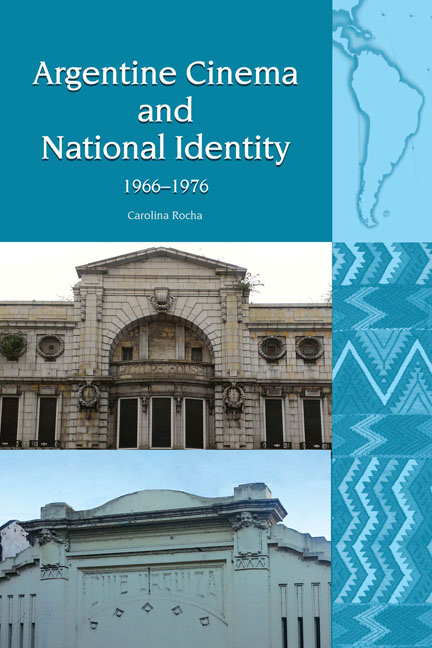Book contents
- Frontmatter
- In Memory of Paulina Piselli (1937–2017)
- Contents
- Acknowledgements
- Introduction
- Section I Argentine History and National Cinema, 1955–1976
- Section II The Cinematic Gauchesque
- 5 Martín Fierro
- 6 Don Segundo Sombra
- 7 Santos Vega
- 8 Juan Moreira
- 9 Los gauchos judíos
- Section III Representing Founding Fathers
- Conclusion
- Bibliography
- Index
6 - Don Segundo Sombra
from Section II - The Cinematic Gauchesque
- Frontmatter
- In Memory of Paulina Piselli (1937–2017)
- Contents
- Acknowledgements
- Introduction
- Section I Argentine History and National Cinema, 1955–1976
- Section II The Cinematic Gauchesque
- 5 Martín Fierro
- 6 Don Segundo Sombra
- 7 Santos Vega
- 8 Juan Moreira
- 9 Los gauchos judíos
- Section III Representing Founding Fathers
- Conclusion
- Bibliography
- Index
Summary
In April 1969, director Manuel Antín (1926–) began shooting Don Segundo Sombra, an adaptation of the homonymous novel by Ricardo Güiraldes (1886–1927). Although the Güiraldes family had jealously kept the novel's rights for years and rejected proposals for cinematic adaptations, a fortuitous meeting between Antín and Buvanahalli Chamne Gonda Ramachandra, Güiraldes's adopted Indian son, opened the way toward the novel's filmic version. With an preliminary budget of 80 million pesos, the film had the total support of the Güiraldes family, who lent two estancias—La Florida and La Blanqueada, both in San Antonio de Areco—for the film's locations. Initially, Antín thought about casting either Alfredo Alcón or Hugo del Carril to play Don Segundo, but Alcón was already the face of Martín Fierro and had already signed to play San Martín in Torre Nilsson's forthcoming El santo de la espada. Del Carril also had previous commitments that prevented him from accepting this role. Consequently, in April 1969, Adolfo Güiraldes, the author's nephew, who had been hired as a consultant, was cast for the main role of Don Segundo. Güiraldes's grandson, Juan Carballido Almonacid, was chosen to play the adult Favio Cáceres. Both Güiraldes and Carballido Almonacid were non-professional among a select group of actors including Héctor Alterio (gaucho in black), Soledad Silveyra (Aurora), Luis Medina Castro (Antenor), Juan Carlos Gené (Don Sixto), and Fernando Vegal (Burgos).
For Antín, the shooting of Don Segundo Sombra constituted a novel challenge. Mariana Sández notes that while his first films belonged to the Generation of 1960 school, Don Segundo Sombra began a new creative stage for the filmmaker, characterized by rural productions like Juan Manuel de Rosas (1972), Allá lejos y hace tiempo [Far Away and Long Ago] (1977), and La invitación [The Invite] (1982). Antín explains that his first phase:
termina en el momento en que yo decido hacer Don Segundo Sombra, que ya no es una obra solitaria, sino un poco ajena también por sus problemas, por sus conflictos, por su desarrollo. Curiosamente descubro que al alejarla de mí produzco mi mejor obra.
[ends at the moment when I decide to make Don Segundo Sombra, which is no longer a solitary work, but rather a little foreign because of its problems, conflicts, and development.
- Type
- Chapter
- Information
- Argentine Cinema and National Identity (1966–1976) , pp. 95 - 105Publisher: Liverpool University PressPrint publication year: 2018

